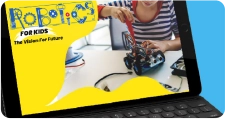
Moonpreneur
STEM stands for Science, Technology, Engineering, and Mathematics. Introducing kids early on in their lives to STEM projects helps intrigue their interest in science. There are several different kinds of STEM projects for kids that can help satisfy their curious minds. Performing these hands-on experiments is the perfect way to introduce kids to the fascinating world of science and technology!
We’re listing 3 easy STEM projects for kids experiments that will teach your young one science concepts. These experiments are not complex and are entirely safe for kids.
1. Make An Egg Float In Saltwater
Concept Explained: Density
One of the very first things we learn in Physics is the concept of density. Rather than making them understand by reading, help your child experiment and learn the concept on their own.
This easy experiment uses:
- 1 Egg
- Salt
- Water
- A big transparent drinking glass
Instructions:
- Take a glass and fill it with water till it’s half full
- Put in 6-7 tablespoons of salt and stir nicely
- Slowly and carefully pour in some more water till the glass is almost full
- You have to ensure that salty and plain water do not mix
- Slowly and carefully put the egg into the water and note what happens next
What do you observe?
When the egg is lowered into the water it is observed that it drops through the plain water until it reaches the salty water and starts to float.
The experiment shows that salt water is denser than plain water and thus enables the egg to float at the juncture, i.e, right in the middle of the glass!!
2. The Catapult Project
Do you wish to build a DIY STEM Project at home by using just a couple of Popsicle sticks? How about building a cool catapult and learning the engineering and physics behind the little model of the ancient weapon?
Yupp! Catapults were formidable weaponry systems used by ancient militaries in several wars.
So let’s make a Home Made Catapult and enjoy the concepts of Physics!
Your catapult will use:
- Popsicle sticks
- Few Rubber Bands
- A bottle cap from a milk jar or a gallon jar
- A hot glue gun
- Tiny objects like paper balls or marshmallow to launch
- A Big Straw
- Wood
- A Spring
Instructions:
- Start by stacking 5 Popsicle Sticks together and wrapping a rubber band around each of the ends
- Then stack 2 more Popsicle Sticks and wrap a rubber band around only one end
- Next, you’ll have to slide those 5 sticks in between these 2 Popsicle Sticks
- Wrapping a rubber band on the meeting juncture of the two sections is important to hold the catapult in one piece.
- In order to hold the projectile you’ll have to attach a bottle cap to the top of the Popsicle Stick
- Time to launch the projectile (a small ball of paper or a marshmallow) by placing it in the cap.
- Now hold the Popsicle Stick down, and release it to fling your projectile in the air!!
What do you observe?
Your catapult teaches you the concept of energy conversion when the lever arm is pulled down the stored potential energy gets converted into kinetic energy which results in launching your projectile into the air up to a certain distance.
The second thing to learn is Newton’s 3 Laws Of Motion, an object will stay at rest until an external force is applied to it, and it will stay in motion until an external force obstructs it (in this case gravity) and third law which states that every action has an equal and opposite reaction.
3. Build Your Own Telescope
Did you know you can build your own telescope by using very simple materials and a set of lenses? This DIY STEM project can teach you how to see a faraway object by building your very own telescope which is also called a spyglass.
Your telescope will use:
- 1 Double convex lens, 38 mm diameter, 500 mm focal length
- 1 Double concave lens, 38 mm diameter, 150 mm focal length
- Cardstock Paper (2 pieces)
- A pair of scissors
- A tape
Instructions:
- Roll one of the cardstock papers into a tube in a way that the outer edge of the tube coincides with the edge of the concave lens (For an 8.5″×11″ piece of cardstock, the resulting tube should be 8.5″ long).
- Similarly, roll the 2nd one so as to make it fit inside the 1st one. Make sure to slide the 2nd tube through the open end of the 1st one.
- Now use tape to fix the convex lens onto the open end of the 2nd tube.
- Now test your creation! Hold up the telescope and aim at a distant object and look through the 1st tube (through the concave lens).
- Make sure to slide your 2nd tube in and out to get a better focus through your telescope when looking through the eyepiece, and keep adjusting the focus till the object is large and not blurry.
What do you observe?
The telescope you built consists of two types of lenses which helps you see an object kept far away. The lens in which you look through is a concave lens also known as Diverging lens. The lens placed towards the end is a Convex lens. One is curved inward and other is curved outward on both sides.
The light passes through the two lenses and bends to make objects that are far look closer and bigger.
In these wintry months try the above mentioned three experiments with your child. While you’re trying out the above mentioned experiments you can also book a free workshop that Moonpreneur is hosting related to futuristic and coolest STEM related subjects, i.e, Robotics, Advanced Math, App Development, and Game Development where your child will get an opportunity to learn more of these hands-on experiments.
To know more about Moonpreneur and our unique STEM Learning Programs which happens to be one of the best in the market, book a 60 min free workshop or talk to our program consultant at +1 (855) 550-0571.









